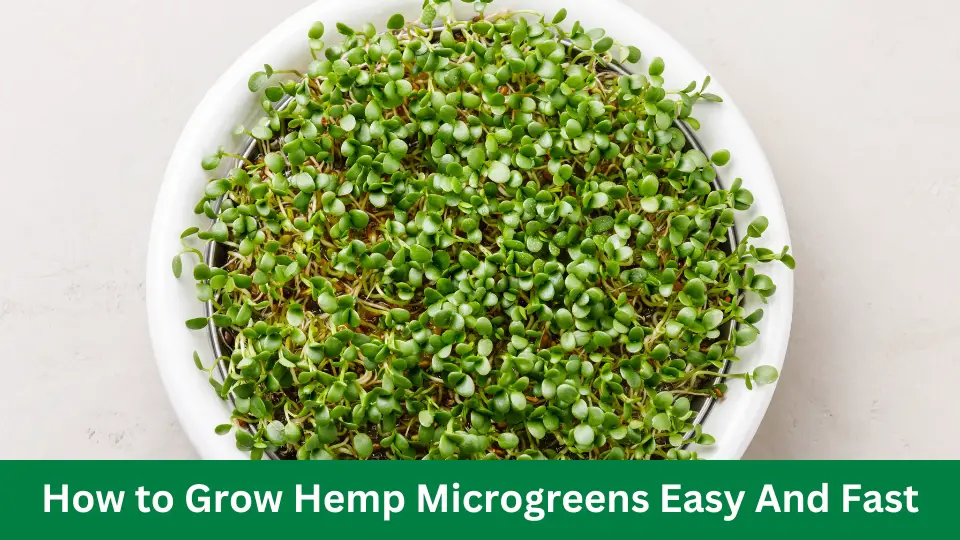You must provide the proper lighting, watering, and temperature conditions to grow hemp microgreens.
Microgreens have gained popularity recently for their nutritional value and versatile use in culinary creations. A type of microgreen that has gained attention is hemp microgreens. Known for their mild flavour and potential health benefits, growing hemp microgreens at home can be rewarding and fun.
This guide will explore the key steps to successfully growing hemp microgreens, from correctly lighting and watering to maintaining optimal temperature conditions.
Choosing The Right Hemp Seeds
Choosing the right hemp seeds is crucial for growing high-quality hemp microgreens. With careful consideration of factors like seed variety, germination rate, and organic certification, you can ensure these nutrient-rich greens’ successful and sustainable cultivation.
Factors To Consider
Choosing the right hemp seeds is crucial for successfully growing hemp microgreens. Here are some important factors to consider:
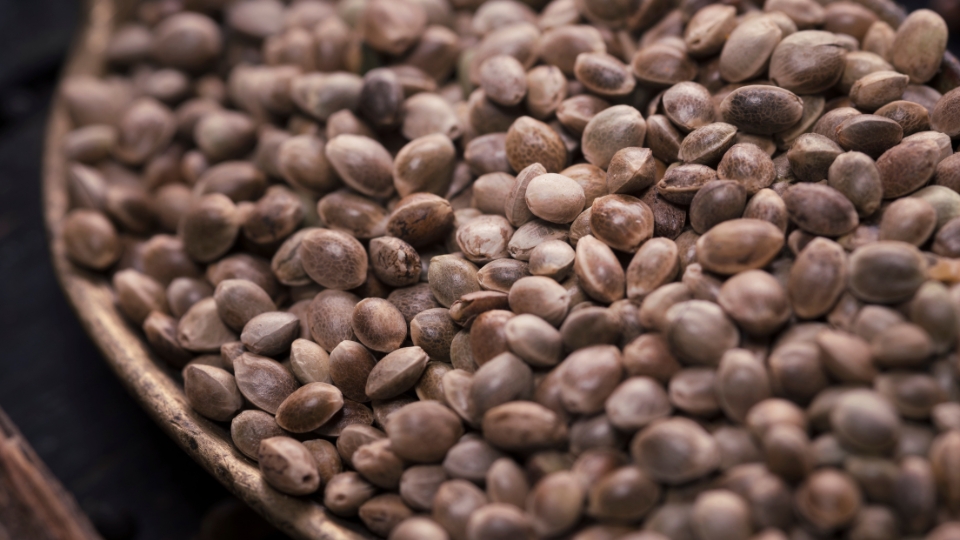
Recommended Hemp Seed Varieties
Not all hemp seeds are suitable for growing microgreens. Here are some recommended hemp seed varieties:
| Variety | Description |
|---|---|
| Cherry Wine | A popular hemp strain with a sweet, fruity aroma and high CBD content. It is known for its fast germination and vigorous growth. |
| Lifter | This strain is prized for its large and dense buds. Lifter hemp seeds produce micro greens with a mild, earthy flavour. |
| Sour Space Candy | With their unique flavour profile, Sour Space Candy hemp microgreens add a tangy and tropical twist to your recipes. |
These recommended hemp seed varieties offer different flavours and characteristics, allowing you to experiment with various taste profiles in your microgreens. Remember to select certified organic seeds from reliable sources to ensure quality.
Preparing The Growing Medium
Prepare the growing medium for hemp microgreens with these essential steps to ensure optimal growth and development. Provide the ideal conditions to nurture your plants, leading to healthy and vibrant microgreens.
Selecting The Container
When growing hemp microgreens, selecting the right container is crucial. A shallow container with good drainage is ideal for this purpose. It can be a seed tray, plastic or ceramic dish, or a recycled container like a takeout box or yoghurt container. Just clean and disinfect the container before use.
Additionally, you can choose between biodegradable trays or reusable ones, depending on your preference and sustainability goals. Remember, the container should hold the growing medium and allow easy watering and airflow.
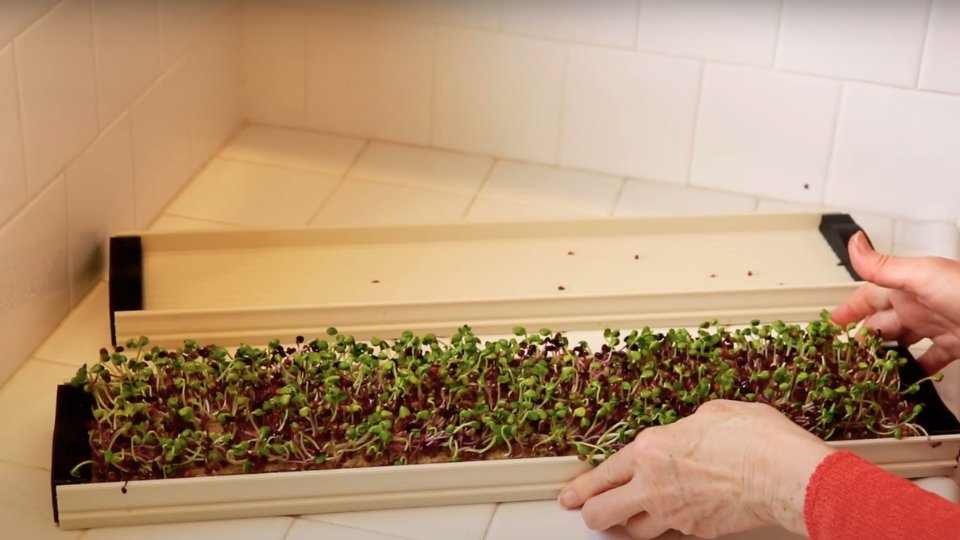
Creating A Nutrient-rich Growing Medium
Now that your container is ready let’s focus on creating a nutrient-rich growing medium for your hemp microgreens. The growing medium is a soil substitute and provides essential nutrients for plant growth. Rather than traditional soil, we will create a soilless medium using coco coir and vermiculite or perlite. Coco coir, made from coconut husks, is sustainable and organic.
It has excellent water retention properties, allowing moisture to reach microgreens while ensuring sufficient drainage. Vermiculite or perlite, on the other hand, improves aeration and prevents compaction. They provide the growing medium with the necessary structure for roots to thrive.
Start by soaking the coco coir in water to create the growing medium. Once it has absorbed the water and expanded, mix it with vermiculite or perlite in a ratio of 3:1 (coco coir to vermiculite or perlite). Gently combine the two materials until they are evenly distributed.
Sowing The Seeds
Now that you have prepared the growing medium, it’s time to sow the hemp microgreen seeds. Spread the seeds evenly over the growing medium’s surface, ensuring they are not too crowded. Following the recommended seed density provided on the seed packet or instructions is important.
After sowing the seeds, lightly press them into the growing medium using your hand or a small tool. This ensures good seed-to-soil contact, which is essential for germination. Once the seeds are pressed in, cover them with a thin layer of growing medium to protect them and prevent drying. Ensure that your growing area is kept at the optimal temperature for germination.
Hemp microgreens typically require temperatures between 70 and 75°F (21–24°C) for successful germination. You can use a heating mat or place the container in a warm area of your home to maintain the required temperature.
Now that you understand the importance of selecting the right container and creating a nutrient-rich growing medium, you are ready to move on to the next steps in growing your hemp microgreens. Stay tuned for our next section on watering and caring for your microgreens.
Germinating And Planting Hemp Seeds
Discover the secrets to growing hemp microgreens by germinating and planting hemp seeds. This guide provides step-by-step instructions on cultivating these nutrient-rich greens in your garden. Achieve success with your hemp microgreen garden and enjoy its health benefits.
Soaking And Pre-germinating Seeds
Hemp seeds must be properly prepared to germinate. Put the seeds in water overnight. This softens the seed coat and starts germination.
Transfer the soaked seeds to a damp paper towel or cloth. Spread the seeds evenly and cover them with damp material. Place seeds in a plastic bag or container to keep them warm and humid.
Leave them alone for 24–48 hours to pre-germinate and sprout the seeds and roots. Germination is faster and more consistent with this step.
Planting The Seeds
When the seeds have pre-germinated, it’s time to plant them. Fill a tray or container with a well-draining growing medium, such as coconut coir or soil formulated explicitly for microgreens. Level the medium and lightly water it to moisten the seeds.
Next, scatter the germinated seeds evenly over the surface. Aim for a dense, but not overcrowded, distribution. Gently press the seeds into the growing medium, ensuring good seed-to-soil contact. Avoid burying the seeds too deep, as this may hinder germination.
Cover the tray with a humidity dome or plastic wrap to create a greenhouse-like environment that promotes moisture retention and facilitates germination. Place the tray in a warm location in indirect sunlight.
Keep a moist growing medium by misting the seeds with water or using a spray bottle. Regularly monitor the moisture level to prevent overwatering or drying out. You should start seeing seedlings emerging from the soil within a few days. At this point, remove the humidity dome or plastic wrap to avoid the risk of mold or fungal growth.
Throughout the growing process, ensure that the seedlings receive adequate light. Place the tray near a window or use grow lights to provide light intensity. Rotate the tray occasionally to promote even growth and prevent seedlings from bending or leaning toward the light source.
| Quick Tip: |
|---|
| Consider using a multi-tiered grow rack or stacking trays to maximize space utilization and increase efficiency. |
Providing Optimal Growing Conditions
Optimize hemp microgreen growing conditions by providing the perfect environment for their development. Create an ideal setup with proper lighting, temperature, humidity, and soil to ensure healthy growth.
Providing Optimal Growing Conditions To grow hemp microgreens successfully, creating the right environment to promote healthy growth and development is crucial.
By understanding the critical aspects of providing optimal growing conditions, you can give your hemp microgreens the best chance to thrive. Lighting requirements, temperature and humidity, watering, and air circulation will be discussed in this section.
Lighting Requirements
Proper lighting is crucial for the successful cultivation of hemp microgreens. These delicate plants require bright but indirect light for optimal growth. Place your trays near a south-facing window or use artificial lighting such as fluorescent bulbs or LED grow lights.
Aim for around 14 to 16 hours of light daily to ensure proper photosynthesis and encourage healthy leaf development. Adjust the distance between the light source and your microgreens to avoid heat or burning.
Temperature And Humidity
Maintaining the right temperature and humidity levels is vital for hemp microgreens. The ideal temperature for their growth is between 65°F and 75°F (18°C to 24°C). Consistent temperatures within this range will promote germination and overall plant health.
A humidity level of around 50% to 60% is also optimal. You can achieve this by using a humidifier or by covering your trays with a plastic dome or clear plastic wrap. This is until the seeds germinate. Monitoring and adjusting these conditions regularly will help prevent mold or disease issues.
Watering And Air Circulation
Proper watering and air circulation are essential to prevent root rot, mold, and other issues hindering hemp microgreen growth. Water your trays regularly, but avoid oversaturating the soil. It is best to mist the surface twice daily to moisten the growing medium.
Avoid using too much force while watering to protect the delicate roots. You should ensure good airflow around your microgreens regarding air circulation.
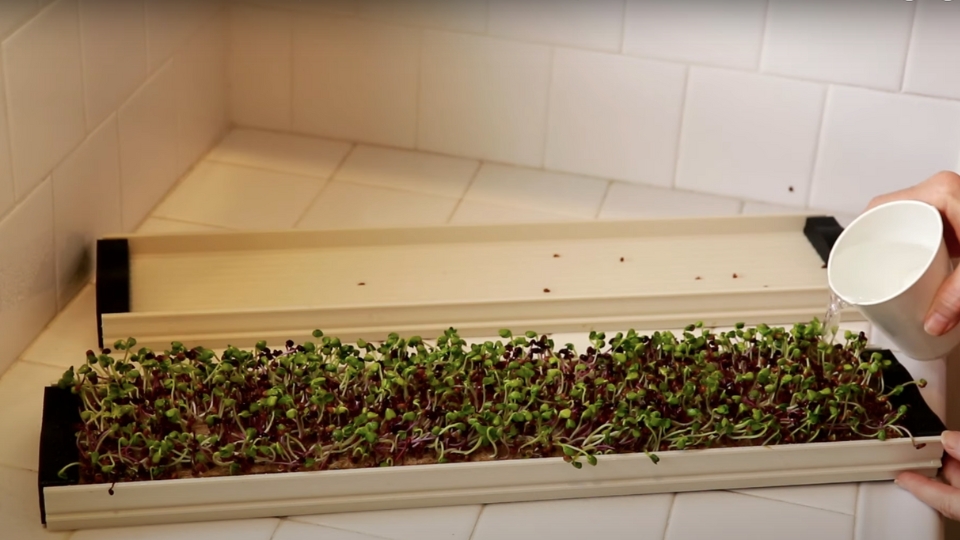
Use a small fan that is nearby and set to low to achieve this. Gentle air movement will prevent stagnant conditions that may lead to mould growth. However, be mindful not to direct the fan directly at the plants, as it may dry them out too quickly.
In summary, optimal growth conditions for hemp microgreens are essential to ensure healthy and vigorous growth.
By paying attention to lighting requirements, temperature, humidity, watering, and air circulation, you can create an ideal environment that supports the growth of these nutritious and flavorful greens.
Caring For Hemp Microgreens
Growing hemp microgreens can be rewarding and enjoyable. These tiny plants are flavorful and packed with nutrients, making them a popular addition to salads, sandwiches, and smoothies. Caring for hemp microgreens is simple but requires attention to detail and regular maintenance.
This article will discuss the important aspects of caring for hemp microgreens, including thinning and trimming, fertilizing, and pest and disease management. Following these guidelines ensures that hemp microgreens thrive and grow into healthy plants.
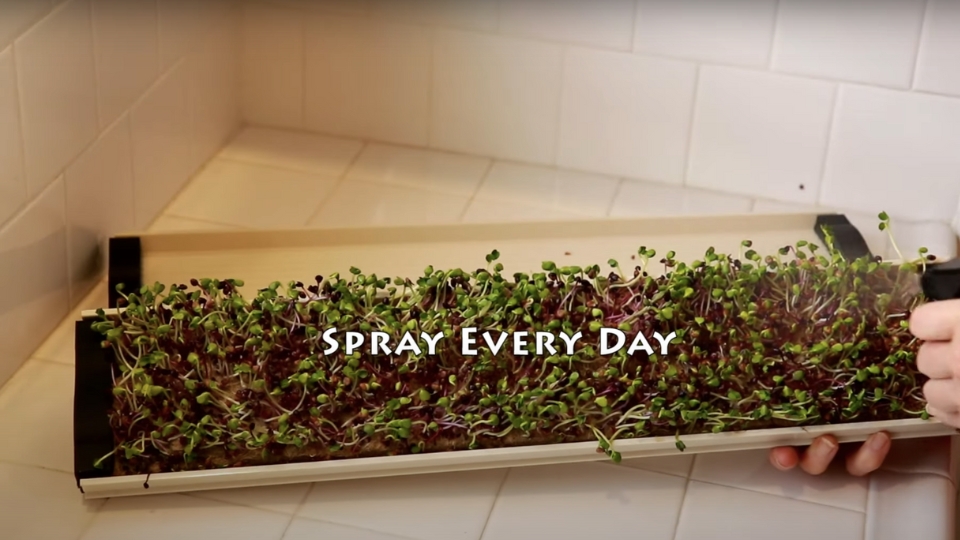
Thinning And Trimming
Thinning and trimming are essential steps in hemp microgreen care. Thinning involves removing excess plants to allow sufficient space for the remaining plants to grow properly. It is important to thin out the microgreens when they reach a height of about 1-2 inches.
This will prevent overcrowding and ensure each plant has access to enough light and nutrients. Cut the excess plants at the soil level to thin your hemp microgreens using clean scissors.
Fertilizing
Fertilizing is another crucial aspect of hemp microgreen care. These plants require rich, nutrient-dense soil to grow and thrive. Start using a high-quality organic soil mix rich in compost or worm castings. This will provide the microgreens with the nutrients they need.
As the microgreens grow, you can supplement their nutrient intake using liquid organic fertilizer. Dilute the fertilizer according to the manufacturer’s instructions and apply it once every week or as needed.
Pest And Disease Management
Pest and disease management is essential to ensuring the health and well-being of your hemp microgreens. One of the most common pests that can affect hemp microgreens is aphids. You can use organic insecticidal soap or a neem oil spray to control aphids.
Apply the spray to the affected plants, covering the upper and lower leaf surfaces.
Also, practising good sanitation measures, such as removing any dead or decaying plant material, can help prevent spreading diseases and pests. Regularly inspect your plants for any signs of pests or diseases, and take immediate action to treat the issue.
Harvesting And Storing Hemp Microgreens
Once your hemp microgreens have reached their prime, it’s time to harvest and store them. Harvesting at the right time ensures flavour, texture, and nutrient content. On the other hand, proper storage helps maintain freshness and extends shelf life.
Here, we will discuss when to harvest hemp microgreens, harvesting techniques, and proper storage methods.
Determining The Right Time To Harvest
Harvesting your hemp microgreens at the optimal stage is crucial to ensuring the best taste and nutrition. The ideal time to harvest is typically when the first true leaves have fully developed and the cotyledons—the first leaves that sprout—have turned green. These true leaves are usually the second set to emerge from a seedling.
Harvesting Techniques
When harvesting your hemp microgreens, you have two options: cutting the greens just above the soil line or gently pulling them from the growing medium. The cutting method is preferred for larger batches, allowing for a quicker and more efficient harvest.
“To cut the microgreens, use a sharp pair of scissors or a clean knife to trim them just above the soil line. Be careful not to disturb the roots.”
If you prefer to pull the microgreens, hold them near the base and gently tug upwards, loosening the roots from the growing medium. Proceed with caution to avoid damaging the remaining crop. Once harvested, ensure the microgreens are clean and free of soil particles or debris.
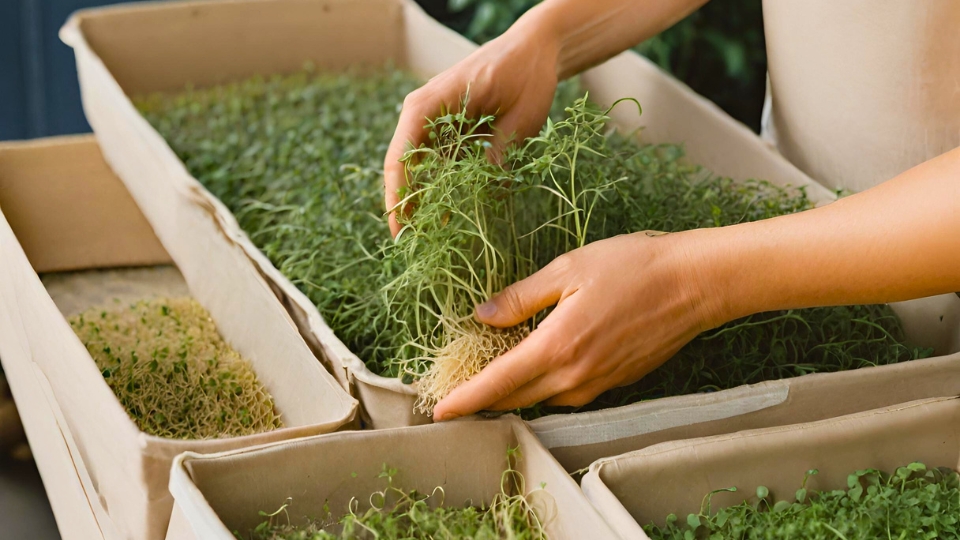
Proper Storage
Proper storage is essential to maintaining the flavour and quality of your hemp microgreens for as long as possible. To store them, follow these steps:
- Rinse and Dry: Give your harvested microgreens a gentle rinse under cold water. Gently swish them around to remove any dirt or residual growing medium. Drain them thoroughly and pat them dry using paper towels or a clean kitchen towel.
- Storage Container: Choose an airtight container for storing your hemp microgreens. Glass or BPA-free plastic containers with lids work well. Make sure the container is clean and dry before adding the microgreens.
- Layering: Arrange the microgreens in a single layer in the container. Avoid overcrowding to prevent bruising or crushing. Consider using multiple containers or separating the layers with parchment or wax paper if you have a large batch.
- Refrigeration: Place the container of microgreens in the refrigerator, ideally in the crisper drawer. The cool temperature will help slow down microbial growth and maintain the freshness of the greens.
- Usage: It’s best to consume your hemp microgreens within 5-7 days of harvesting to enjoy their peak freshness and flavour. Remember to rinse them again before consuming them to remove any residual dirt.
Using these harvesting and storage techniques, you can ensure that your hemp microgreens remain fresh and retain their nutritional value for longer. Now that you have mastered the art of harvesting and storing your hemp microgreens, you can confidently enjoy their vibrant flavour and incorporate them into your favourite dishes.
Creative Uses For Hemp Microgreens
Discover the unlimited potential of hemp microgreens with these creative ideas. From adding a nutritious twist to salads and sandwiches to incorporating them into smoothies and pesto, learn how to grow and enjoy these delicious and versatile greens.
Incorporating hemp
You must discover hemp microgreens’ creative uses if you love unique and flavorful ingredients. These tiny but mighty plants pack a nutritional punch and provide a delightful crunch to various dishes.
Incorporating hemp microgreens into recipes and using them for decorative and gift ideas are just a few ways to let these amazing greens shine. Embrace hemp microgreens’ versatility in this blog post as we explore the many possibilities.
Incorporating Hemp Microgreens Into Recipes
Hemp microgreens are more than just a garnish – they bring an explosion of flavour and texture to your meals. Whether you are a culinary enthusiast or a novice cook, experimenting with these greens will spice up your kitchen adventures.
Here are some exciting ways to incorporate hemp microgreens into your recipes:
- Add a handful of hemp microgreens to salads for a fresh and peppery twist.
- Toss hemp microgreens into stir-fries or sautés for a vibrant burst of colour and flavour.
- Blend hemp microgreens into smoothies for an added boost of nutrients.
- Sprinkle hemp microgreens over omelettes or scrambled eggs for a delightful crunch.
- Use hemp microgreens as a topping for pizzas, sandwiches, or wraps to elevate the taste.
Decorative And Gift Ideas
Hemp microgreens not only enhance the flavour of your dishes, but they also make for beautiful decorations and thoughtful gifts. Here are some creative ways to utilize hemp microgreens beyond the kitchen:
- Create vibrant and eye-catching centrepieces by arranging hemp microgreens in a decorative bowl or vase.
- Use hemp microgreens as a unique and sustainable alternative to traditional confetti for special occasions.
- Package small bundles of hemp microgreens as party favours or gifts for friends and family.
- Make personalized herb-infused oils by combining hemp microgreens with olive oil in a beautifully labelled bottle.
- Grow your microgreens using hemp microgreen kits and give them as eco-friendly presents.
The possibilities for incorporating and presenting hemp microgreens are endless. Let your imagination run wild and explore the multifunctional nature of these nutritious greens. Whether cooking up a storm or searching for unique gift ideas, hemp microgreens will add extra creativity while providing a healthy dose of nutrients.
FAQs For How To Grow Hemp Microgreens
Are Hemp Microgreens Legal?
Hemp microgreens are legal to grow and consume in many countries.
Are Hemp Microgreens Healthy?
Hemp microgreens are a healthy choice for your diet. They are packed with nutrients, antioxidants, and vitamins. Consuming hemp microgreens can support your overall health and well-being.
How Do You Grow Hemp for Beginners?
To grow hemp for beginners, follow these guidelines:
1. Choose suitable soil and planting locations.
2. Obtain high-quality hemp seeds or clones.
3. Provide consistent watering and proper drainage.
4. Implement a nutrient-rich feeding schedule.
5. Pay attention to pest control and harvest at the right time.
Final Word
Growing hemp microgreens can be enjoyable and rewarding. Following the steps outlined in this guide, you can successfully cultivate these nutrient-rich greens right in your home. Ensure adequate light, moisture, and ventilation to ensure optimal growth.
With a little patience and care, you’ll soon enjoy these delicious and healthy microgreens. Happy growing!
Video Source: https://www.youtube.com/watch?v=ADMC4a4Fz-8

